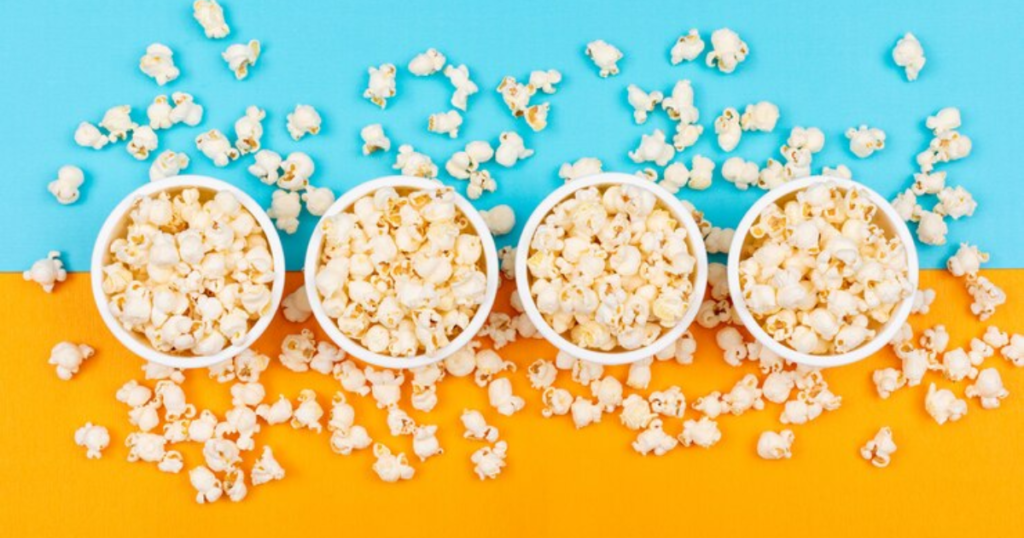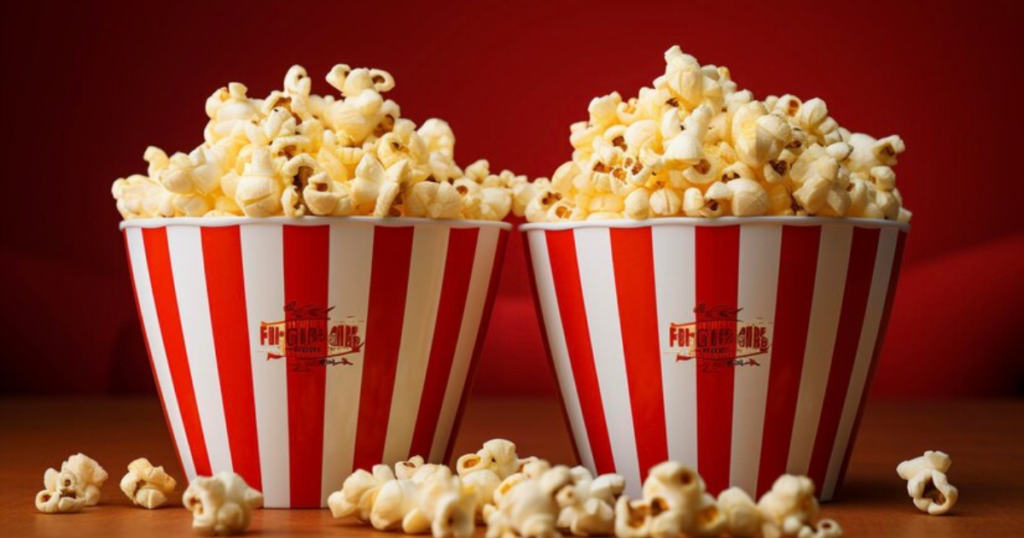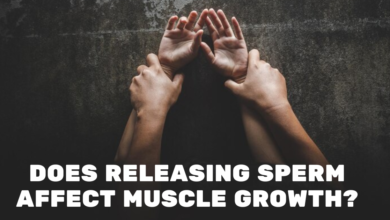How Many Calories in a Bag of Popcorn?

Lots of people like popcorn! It’s a yummy snack that people eat when they watch movies, relax at home, or just want something light to munch on. But did you ever think about how many calories are in popcorn? Let’s find out how many calories are in a bag of popcorn and what things can make the calorie count change.
What Are Popcorn?
Popcorn is a corn kernel that puffs up when cooked. It has been a popular snack for generations, with people all over the world enjoying it in many shapes and flavors. Popcorn was traditionally created by heating kernels in a pot or over an open flame, but there are now several techniques of preparation, each with its nutritional benefits.
Nutritional Value of Popcorn
Popcorn, a popular snack enjoyed by many, can offer various nutritional benefits depending on how it’s prepared and consumed. Here’s an overview of its nutritional value:
- Calories
- Fiber
- Protein
- Carbohydrates
- Fat
- Vitamins and Minerals
- Antioxidants
Calories:
Popcorn is generally low in calories, making it an ideal snack for people limiting their calorie intake. Air-popped popcorn has around 31 calories per cup (8 grams).
Fiber:
Popcorn is high in dietary fiber, which is helpful for digestion and can help you feel full. One cup of air-popped popcorn has around 1.2 grams of fiber.
Protein:
While popcorn is not exceptionally high in protein, it does contribute a modest portion to your daily protein need. A cup of air-popped popcorn has about one gram of protein.
Carbohydrates:
Popcorn is mostly composed of carbohydrates, the majority of which are starches. It is a whole grain, thus it contains complex carbs that are digested more slowly, resulting in a gradual release of energy.
Fat:
Air-popped popcorn is extremely low in fat, with less than 1 gram per cup. However, this can vary depending on how it is prepared. Popcorn made with additional oils or butter will be greater in fat content.
Vitamins and Minerals:
Popcorn contains trace levels of magnesium, phosphorus, zinc, manganese, and B vitamins such as niacin and folate.
Antioxidants:
Whole grains, such as popcorn, include antioxidants, especially polyphenols, which have been linked to a variety of health advantages, including decreased inflammation and a lower risk of chronic diseases.

What Are The Types of Popcorn?
1. Butterfly Popcorn
This sort of popcorn, distinguished by its irregular shape and large, butterfly-like kernels, is valued for its light and airy texture. Butterfly popcorn is widely used in movie theaters and is frequently served with butter or other flavorings.
2. Mushroom Popcorn
Unlike butterfly popcorn, mushroom popcorn has spherical, compact kernels that resemble little mushrooms. This form of popcorn is ideal for applications requiring toughness and shape retention, such as caramel or chocolate coating.
3. Yellow Popcorn
Yellow popcorn is one of the most popular types, known for its basic corn flavor and golden hue. It transforms into a fluffy texture and is commonly served with salt or other seasonings.
4. White Popcorn
White popcorn tastes similar to yellow popcorn but has a slightly different feel. It pops into smaller, more delicate kernels. It is frequently used in gourmet popcorn blends and is known for its soft bite.
5. Blue Popcorn
Blue popcorn is a visually appealing type with kernels that are rich blue. While less prevalent than yellow or white popcorn, it has a distinct flavor profile and is frequently included as a decorative ingredient in popcorn mixes.
6. Red Popcorn
Red popcorn, as the name implies, has bright red kernels. It has a somewhat nuttier flavor than other types and is renowned for its distinctive appearance.
7. Rainbow Popcorn
Rainbow popcorn, a combination of multiple colored kernels, provides a vibrant and savory eating experience. This variety of popcorn is commonly seen in gift tins and specialty popcorn assortments.

How Many Calories in a Bag of Popcorn?
The amount of calories in a bag of popcorn varies according to the brand, serving size, and any other ingredients such as butter or flavor.
On average, a small bag of normal, air-popped popcorn (approximately 3 cups) has 90-100 calories. Larger bags or ones with butter or other toppings may contain much more calories.
According to the United States Department of Agriculture USDA, a 100-gram bag of microwave popcorn contains between 424 and 557 calories, depending on what ingredients are included.

What Are The Health Benefits of Popcorn?
Promotes Digestive Health
Popcorn, which is high in dietary fiber, helps digestive health by bulking up stool and making it easier to transit through the digestive tract. Adequate fiber consumption is linked to a lower incidence of constipation, hemorrhoids, and diverticular disease.
Supports Weight Management
Popcorn, with its low-calorie and fat content, can be a delicious snack option for people who are attempting to lose weight. Unlike many other snacks high in refined carbohydrates and sugars, popcorn provides a pleasing crunch without causing guilt.
A bowl of air-popped popcorn can help satisfy hunger demands between meals, making it simpler to stick to a calorie-controlled diet.
Related: What to Eat with Cornbread
Provides Satiety
Despite its light and airy texture, popcorn has a high volume-to-calorie ratio, allowing you to eat a generous piece without absorbing too many calories. This makes popcorn a satiating snack option, keeping you satiated for longer and lowering the likelihood of overeating.
Contributes to Heart Health
Popcorn’s fiber content is important for heart health. High-fiber diets have been related to lower rates of cardiovascular disease, stroke, and hypertension. Furthermore, the antioxidants in popcorn may reduce inflammation and enhance blood vessel health.
What are the Side Effects of Eating Too Many Calories?
Consuming too many calories can have a variety of negative repercussions on your health and well-being. Here are some potential implications of excessive calorie consumption:
Weight gain:
Consuming more calories than your body requires for energy might contribute to weight gain. When you continually consume more calories than you burn, the surplus energy is deposited as fat, causing a gradual weight increase over time.
Obesity:
Long-term calorie overconsumption can eventually lead to obesity, a condition defined by an excess accumulation of body fat. Obesity is linked to an increased risk of a variety of health issues, including type 2 diabetes, heart disease, stroke, some malignancies, and musculoskeletal conditions.
Increased risk of chronic disease:
Eating lots of high-calorie food, especially sugary drinks, processed meals, and fatty snacks, can make you more likely to get long-lasting sicknesses like type 2 diabetes, heart problems, high blood pressure, and certain cancers.
Metabolic Syndrome:
Excessive calorie consumption, particularly when combined with a sedentary lifestyle, can lead to the development of metabolic syndrome. Metabolic syndrome refers to a group of diseases that include high blood pressure, high blood sugar levels, abnormal cholesterol levels, and extra abdominal fat. These conditions all raise the risk of heart disease, stroke, and diabetes.
Joint Pain:
Excess weight from overconsumption of calories can place additional strain on the joints, particularly those in the knees, hips, and lower back. This can cause joint discomfort, stiffness, and an increased risk of arthritis and other musculoskeletal disorders.
Poor mental health.
Overeating and consequent weight gain can have a significant impact on mental health, including feelings of guilt, shame, low self-esteem, and even despair. Emotional eating, which involves using food as a coping method for stress or unpleasant emotions, has the potential to perpetuate an overeating cycle and deteriorate mental health.

Conclusion
Popcorn is yummy, but it’s important to know about its calories and how it’s made. The best popcorn for you is popped using air and doesn’t have any extra things on it. But if you’re having popcorn from the movies or the microwave, it might have more calories and fat. It’s okay to eat popcorn sometimes, just don’t eat too much and try to pick the healthiest kind.
People Also Ask
How many calories are in a bag of popcorn?
Popcorn’s calories vary depending on how it is prepared. A small bag of plain air-popped popcorn, with no extra butter or flavorings, typically contains 30 to 50 calories per cup. However, if you add butter or other toppings, the calories can increase. It’s like putting extra toppings on your pizza: more toppings equals more calories!
Are microwave popcorn bags high in calories?
Microwave popcorn packets frequently have additional flavorings and oils, which raises the calorie count. A single serving of microwave popcorn contains 100-150 calories, comparable to a small candy bar. Check the nutrition label for an accurate calorie count.
Is homemade popcorn healthier than store-bought?
Homemade popcorn provides healthier options because of its control over ingredients, low-calorie count, and flexibility to experiment with flavors such as cinnamon or chili powder, making it similar to being the popcorn chef.
Can I eat popcorn if I’m on a diet?
Popcorn might be a healthy snack option if you’re watching your calorie intake. It is low in calories and can make you feel full due to its high fiber content. Simply be aware of portion proportions and avoid using too much butter or sweet toppings. Consider popcorn to be a delightful, crunchy snack that, when consumed in moderation, will not ruin your diet goals.
How can I make popcorn healthier?
To produce healthy popcorn, try air-popping the kernels instead of adding oil or butter. For taste without adding too many calories, try using seasonings such as garlic powder, nutritional yeast, or even a sprinkling of parmesan cheese.





Thank you for reaching out! If you have any specific questions or topics in mind, please feel free to share them, and I’ll do my best to assist you. Whether you’re curious about a particular technology, scientific concept, literary work, or anything else, I’m here to provide information, advice, or engage in a discussion. Don’t hesitate to let me know how I can help you further!
Thanks! For more discussion, Can you email me on “muhammadaleeh@gmail.com”?
Hey there You have done a fantastic job I will certainly digg it and personally recommend to my friends Im confident theyll be benefited from this site
Usually I do not read article on blogs however I would like to say that this writeup very compelled me to take a look at and do it Your writing style has been amazed me Thank you very nice article